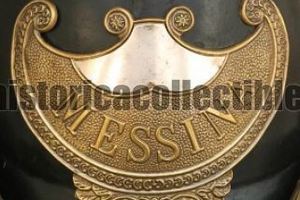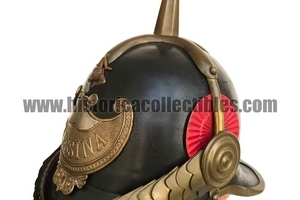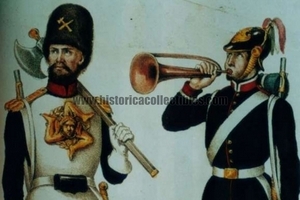Helmet Civic Guard Messina Ferdinand II (Kingdom of the 2 Sicilies), 1848
Helmet, supplied to the Civic Guard of the city of Messina, as shown by the large front frieze (with the name of the city) and the small frieze relating to the Trinacria which symbolized Sicily which was part of the "Kingdom of the 2 Sicilies" when, at the head of the Empire was Ferdinand II. With the revolutionary uprisings of 1848 (Unification of Italy) the use of these "Pre-unification" helmets declined.
The Kingdom of the Two Sicilies was a sovereign state in southern Europe that existed between December 1816 and February 1861, i.e. from the Restoration to the Unification of Italy.
Before the French Revolution of 1789 and the subsequent Napoleonic campaigns, the Bourbon dynasty reigned in the same territories, but these were divided into the Kingdom of Naples and the Kingdom of Sicily (with the exception of the island of Malta which the Kingdom of Sicily granted in 1531 as a perennial fiefdom of the Sovereign Military Order of Malta).
A year after the Congress of Vienna and with the Treaty of Casalanza, the Bourbon sovereign who before then assumed the Neapolitan crown (beyond the Lighthouse) as Ferdinand IV, and the Sicilian one (beyond the Lighthouse) as Ferdinand III reunited the Kingdom of Naples and the Kingdom of Sicily into a single state entity, through the Fundamental Law of the Kingdom of the Two Sicilies of 8 December 1816, almost 400 years after the first proclamation of the Kingdom Utriusque Siciliae by Alfonso the Magnanimous. Initially the capital was Palermo (secular seat of the Sicilian Parliament), but the following year (1817) it was moved to Naples. Palermo continued to be considered the "capital city" of the island of Sicily.
It ended with the signing of the armistice and the surrender of Francis II on 17 February 1861 and with the proclamation of the Kingdom of Italy on 21 February of the same year.





